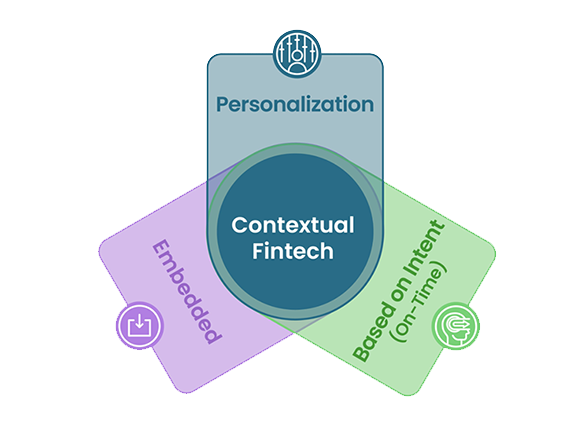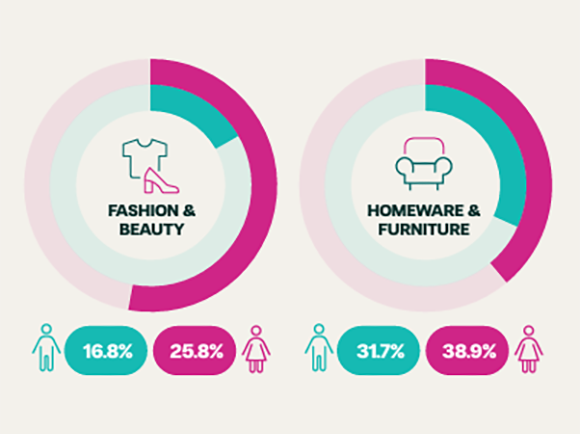5 tips for a winning BNPL marketing strategy

Merchants experience higher conversion rates, bigger baskets, and an overall boost in sales by offering Buy Now, Pay Later (BNPL) and Short-term Interest-free Credit (STIFC) products.
But to get the maximum impact from these benefits, retailers must implement a thorough marketing and communications strategy. Our five tips for a winning BNPL marketing strategy explains how.
1. Consider your visual identity
BNPL providers made a big splash during the COVID-19 pandemic with their bright and colourful visual identities. These were part of the reason they appealed so much to younger demographics.
But higher-end businesses may find this positioning at odds with their own. Luxury brands, high-value item retailers and B2B sellers – especially those who invest heavily in their brand and visual identity – may want to err away from these ‘jazzy’ BNPL platforms.
This is where a whitelabel platform like Divido’s comes in useful. With a whitelabel platform, you won’t need to offer a third-party finance solution at the checkout. Rather, you can impart your own visual identity and tone of voice onto the application process, making the whole experience feel uniquely yours.
Whitelabel platforms, such as Divido’s, are integrated seamlessly at the checkout, giving the impression that it is the retailer themselves providing the credit. Of course, there is a third-party platform provider and lender involved, but from the consumer’s perspective the whole journey is totally seamless.
Choosing a whitelabel platform turns BNPL from an option at the checkout to something you, the retailer, own and manage. That allows you to continue to build trust at the checkout and beyond.
2. Introduce retail finance early on in your customer journey
Establishing retail finance early in your customer’s journey is one of the best ways to make customers aware of your retail finance offering. It will also help to maximise your sales, especially when we consider that 9.5 million UK consumers would abandon a retailer who didn’t offer BNPL.
Introducing BNPL early could help to build trust and incentivise your customers to reach the end of their purchasing journey. And research has shown that customers searching for a product with the understanding that the cost of the item can be divided into interest-free payments are more likely to make a purchase, and less likely to abandon their shopping cart.
What’s the best way to let your customers know early on in the journey? A message on your homepage is a sure-fire bet. This will immediately inform prospective customers of their options and ensure that the option to split the cost stays front-of-mind while they fill their baskets.
You may then want to extend your message so that it’s included in emails, advertisements and – perhaps most importantly – at the checkout in your physical stores.
Of course, knowing where and when to communicate is only half the story. That leads us swiftly into how to communicate…
3. Make the information clear
Despite its meteoric rise, there are still a great number of people who have not come into contact with Buy Now, Pay Later.
It’s important, therefore, not to assume that your customers have any prior experience in dealing with retail finance, and to provide information in a way that offers a clear introduction for everyone.
The information should be prompt, concise and answer any questions before they arise. A dropdown FAQ section is arguably the most efficient way to do this, while graphs and infographics can make your content appear all the more engaging and trustworthy.
Be sure to cover the following:
- What type of financing is on offer (BNPL, STIFC, etc.)
- How to apply for this finance
- How to buy something using finance
- How to make and manage payments
- Who the agreement is with (i.e. the relationship between lender and merchant)
- Who to contact if there is an issue (See here for more information)
- The consumer’s obligations when taking out a loan, and any potential penalties
It’s also useful to have a widget or calculator that allows consumers to play around with costs, showing them the monthly repayments they’ll make, giving them the option to increase or decrease their deposit, and so on.
It’s a good idea to include your FAQ section underneath your retail finance option at the checkout, while more in-depth information should be stored on a dedicated section of your website.
If your website or customer journey cannot support an extra webpage, then make good use of drop-down boxes and pop-ups instead.
4. Be consistent: make your offering omni-channel
Consumers today are increasingly looking for omni-channel experience. Merchants that can provide consistency at every touchpoint are rewarded with 30% higher sales, whilst those with a strong omni-channel strategy retain 89% of their customers, as opposed to 33% for those with a weak strategy.
Therefore, a consistent payment strategy is crucial for merchants hoping to maximise their retail finance benefits.
Consider the fact that more than 50% of consumers either look at a product in-store then buy it or online, or vice versa. This emphasises the importance of having a retail finance programme that extends through all touchpoints in the retail journey.
Creating an omni-channel experience can be as simple as providing a link to your online checkout via an in-store tablet. However you choose to do it, make sure your offering is available wherever your customer interacts with your business.
5. Make use of data
Data is crucial to understanding whether your retail finance solution is performing. Ensure you are tracking your conversion rates, average order value and customer acquisition for every decision made, and processing this data in order to look for opportunities to improve.
Prudent merchants will also pay attention to activation rates to see what’s driving them and where they can be improved. If customers are being approved for finance but not activating their application, some UX tweaks could help.
Nudging, for instance in the form of carefully-positioned pieces of copy, or follow-up emails reminding consumers about their almost-finished application, may work.
If you have the capacity, you may even want to consider having someone in your customer success team give the customers a call directly to discuss their options.
The more merchants pay attention to the numbers, the more they’ll be able to maximise the benefits of their retail finance offering.
How to win at retail finance
Retail finance can be a fantastic way to stay competitive, but there is no one-size-fits-all solution.
Once a suitable provider has been chosen, merchants should focus on how best to communicate their offering.
Let your customers know early in their journey that retail finance is available and continue to inform them at other important stages, such as the checkout. Use A/B testing to determine the best places for promotional messaging, and the types of messages that seem to resonate best in driving both applications and activations. Ensure any communication is clear, and assume your consumer has no prior knowledge of how retail finance works.
Above all, measure and optimise your messaging using data. Does a follow up email increase activation rates? Is an infographic better than textual information at converting customers?
Following these six tips will grow your customer base, boost your sales, and give you a competitive advantage over other merchants.
Optimising your retail finance programme? Speak to Divido to find out how our whitelabel platform could help.
You might also
be interested in
Keen to know more?








